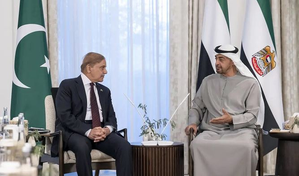STRATEGIC EYE – A column on current affairs – relating to India and/or Canada and looking at ways to promote Indo-Canadian relations in many spheres.
Sino-Indian Ties Are Vexed, Characterized By Cooperation, Competition & Conflict
By Bal Kishan Sharma@
The Modi- Xi informal summit inthe ancient town of Mamallapuram in South India, scheduled from Oct 11 -13, is awaited with a mix of optimism and pessimism.
China’s overt support to Pakistan after India abrogated Article 370 seems to have diluted the flavor of Wuhan spirit. Yet, it is hoped that the forthcoming summit may restore its sanctity. The optics and tangibles merit a close watch. During the Mamallapuram summit Xi and Modi are unlikely to follow a well-defined agenda or risk venturing into contentious issues like Kashmir.
Their informal interaction seems confined to maintaining tempo of strategic communications, keeping the border dormant and discussion over innocuous issues, such as of civilizational dialogue and boosting people to people contact.
The vexed Sino-Indian relations are characterized by the three Cs; cooperation, competition and conflict. The two countries cooperate on international trade, climate change, at BRICS, RIC, (Russia-India-China) SCO, Shanghai Cooperation Organization) AIIB (Asian Infrastructure Investment Bank) and possibly RCEP (Regional Comprehensive Economic Partnership).
Their competition devolves around contrasting politico-economic models, domination of resources, strategic locations and influence in Asia. However, the most daunting component in their relationship is that of conflict-that is steeped in contested borders, Tibet issue, imbalance in trade, water sharing, Pakistan China strategic nexus and growing Indo-US strategic partnership in the Indo-Pacific region.
In the last two decades the bilateral relations have transited through three broad phases; first, the rapprochement period from 2000 – 2006, second, the pendulum period, from 2006- 2017 and the third, the Wuhan spirit in the last two years. The last decade witnessed serious military stand offs between the two armies at the disputed borders; Doklam crisis in mid 2017 being the most serious one that caught the world attention.
The Wuhan Xi – Modi informal summit on 27 Apr 2018, was a refreshing breakthrough in the stalemate. They agreed to mitigate competitive component in the bilateral relations, heed respective core interests, institute guidelines on the CBMs to maintain peace and tranquility at the border and build strategic trust for resolving other issues.
Post Wuhan, the diplomatic activity moved along a positive trajectory with a focus on building strategic communication, practical cooperation, enhancing cultural exchanges and finding a new ‘modus vivendi’ in the bilateral relations.

The two top leaders interacted at various international events, notably at the SCO summit in Bishkek and G 20 Summit in Osaka. Nonetheless, the two sides fundamentally remain circumspect about each other. India remains wary of growing Pakistan China Strategic nexus, CPEC (China-Pakistan Economic Corridor) running through Indian-claimed territory, China’s strategic forays into India’s neighborhood and China’s massive military modernization and infrastructure development in Tibet.
Post-revocation of Article 370 in J&K, China has openly supported Pakistan at the recent informal UNSC (United Nations Security Council) meeting and in a recent joint declaration issued by the foreign ministers of Pakistan and China. Beijing has also objected to reconfiguration of Ladakh as a Union Territory and naming Aksai Chin as Indian territory.
On 11 September, there was another standoff between the Chinese and Indian troops in Eastern Ladakh, which could have escalated but for expedient intervention at the apex level. Similarly, China remains skeptical about US-India strategic partnership, with particular reference to Indo Pacific Strategy, QUAD (Quadrilateral Security Dialogue) India-US military cooperation and the signing of strategic agreements like LEMOA (Logistics Exchange Memorandum of Agreement), COMCASA (Communication Compatibility and Security Agreement) and possible signing of BECA (Basic Exchange Cooperation Agreement) in the near future.
China is also unhappy with India not endorsing the BRI. New Delhi perceives China is pursuing a strategy of restraining India and playing its Pakistan card to countervail the Elephant. China, on the other hand, perceives India being a cog in the US design to stymie China’s rise.
China has unequivocally sided with Pakistan on matters of extreme concern to India. In comparison, India has shown remarkable restrain and maturity by not perpetuating China’s Tibet, Xinjiang, Hong Kong and Taiwan dilemmas. India expects that China too should heed India’s core interests and sensitivities.
Sagacity demands that the two Asian giants do not permit the irritants to dampen Wuhan spirit and use the opportunity at the Mamallapuram summit to put the bilateral relations on an even keel and constructively work towards making the ‘Asian Century’ a reality.
@Bal Kishan Sharma Maj. Gen. AVSM, SM & BAR (Rtd.)Specialist on Strategic Assessment and Scenario Building























































